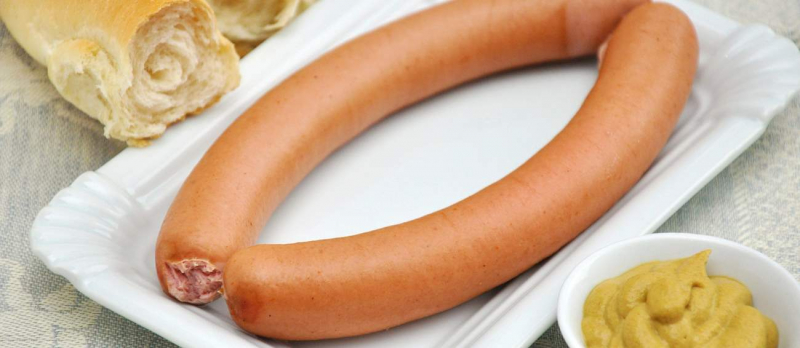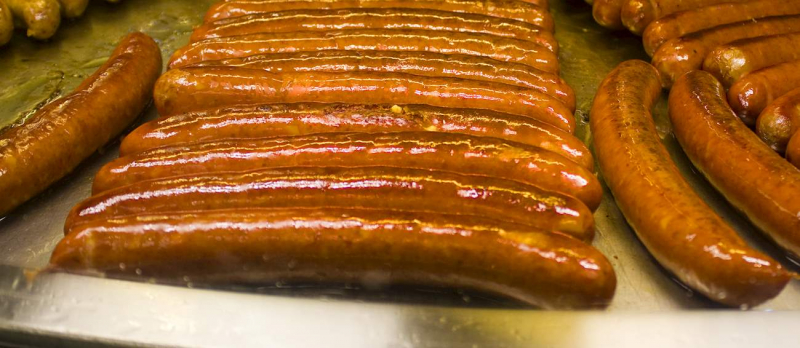Wiener Würstchen

It was back in 1805, in Vienna, when Johann Georg Lahner, a butcher from Gasseldorf but trained in Frankfurt, created a new variety of sausage by adding beef to the original frankfurter, which was made exclusively from pork. Initially, his creation carried the name Lahners würstel, but it soon came to be known as frankfurter würstel, which is the name that has stuck until today in Austria.
Considered a variation on the traditional frankfurter würstchen (frankfurter sausage), Wiener Würstchen is a thin parboiled sausage traditionally made of pork and beef in a casing of sheep's intestine, then given low-temperature smoking. The combination is finely chopped and seasoned with spices such as white pepper, coriander, mace, paprika, salt, and ginger before it is placed into a thin sheep intestine, smoked, and parboiled.
In Germany, the sausage came to be known as Wiener Würstchen (meaning Viennese sausage in German), referring to the place where the production of these sausages initially began. Another reason why the Germans had to call these sausages Wiener Würstchen instead of frankfurter sausages, as was the case in Vienna, was because of the protected status that frankfurter würstchen have been enjoying in the country since 1860. These sausages are usually enjoyed in pairs, either warm or cold, and they are typically simply heated in boiling water, roasted, or grilled.











